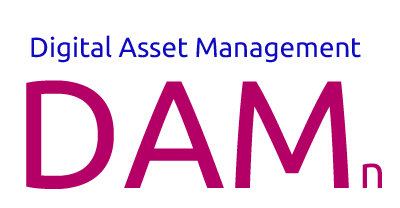Introduction
In the digital age, managing vast amounts of media content efficiently is a formidable challenge. Enter Digital Asset Management (DAM) systems, which have evolved from simple storage repositories to comprehensive platforms that revolutionize how marketing and communication teams operate. In this blog post, we’ll explore the evolution of DAM functionality and how it has become a pivotal tool for enhancing marketing and communication efforts.

The Core Functionality of DAM: Storage and Organization
At its inception, DAM primarily focused on providing a centralized location to store and organize digital assets, such as images, videos, documents, and other media files. This core functionality already proved invaluable for streamlining workflows, reducing duplication, and improving collaboration within marketing teams. However, the demands of the digital landscape spurred DAM systems to evolve beyond basic storage capabilities.
Evolution of DAM Functionality: Enriching Marketing and Communication
- Metadata Enrichment: DAMs now allow users to attach extensive metadata to assets, making them easily searchable and discoverable. This metadata might include keywords, descriptions, copyright information, and even usage rights. This enhancement enables marketers to quickly locate and repurpose assets, saving valuable time and effort.
- Version Control and Collaboration: DAM systems have integrated version control features that enable teams to manage changes to assets over time. This ensures that the most up-to-date version is used, reducing the risk of using outdated content. Collaboration tools within DAM platforms facilitate real-time feedback, approvals, and annotations, enhancing the efficiency of marketing and communication workflows.
- Dynamic Asset Transformation: Modern DAMs offer dynamic transformation capabilities, allowing users to generate different versions of an asset on the fly. For instance, a high-resolution image can be automatically transformed into various sizes and formats, optimized for different platforms and devices. This functionality ensures consistent branding across diverse marketing channels.
- AI-Powered Asset Insights: Artificial Intelligence (AI) has found its way into DAM systems, enabling advanced asset insights. AI algorithms can analyze the performance of assets across various campaigns, helping marketers identify which content resonates best with their audience. This data-driven approach aids in refining marketing strategies for better engagement and conversions.
- Integration with Marketing Tools: Recognizing the importance of seamless workflows, modern DAMs integrate with other marketing tools like Content Management Systems (CMS), Customer Relationship Management (CRM) software, and marketing automation platforms. This integration streamlines the process of content distribution, personalization, and audience targeting.
- Rights Management and Compliance: DAMs have also evolved to include robust rights management features. This ensures that assets are used according to licensing agreements and compliance standards. The ability to monitor usage rights and expiration dates prevents legal and reputational risks associated with unauthorized content use.
Conclusion
Digital Asset Management has transcended its initial role as a repository for media files. It has emerged as a dynamic tool that empowers marketing and communication teams to efficiently manage, distribute, and leverage assets in ways that significantly enhance their strategies. From intelligent metadata enrichment to AI-powered insights, DAMs have evolved to meet the demands of the digital landscape, becoming indispensable for modern marketing and communication endeavors. As technology continues to advance, we can anticipate even more innovative functionalities that will further transform how DAMs contribute to successful marketing campaigns and effective communication strategies.
